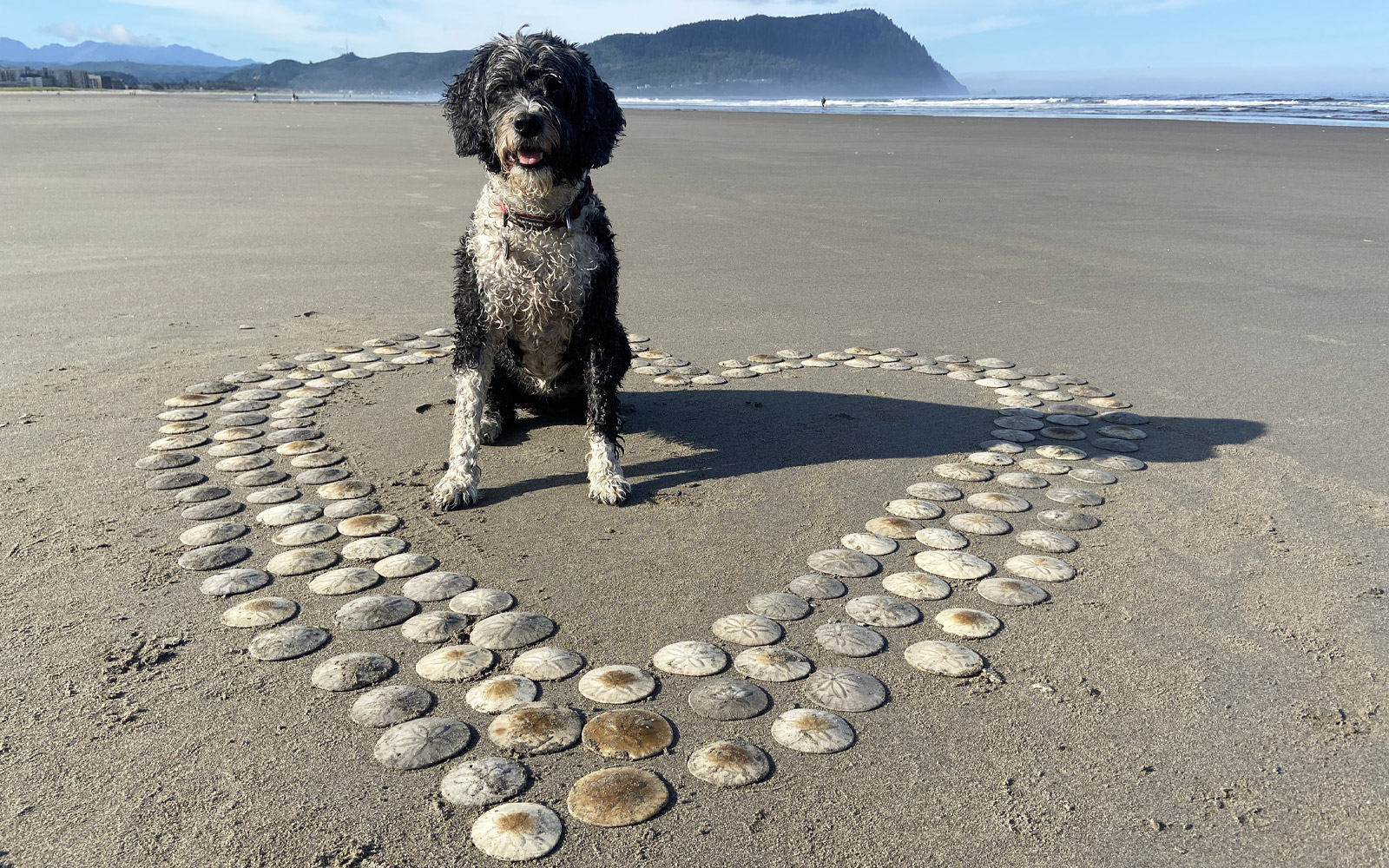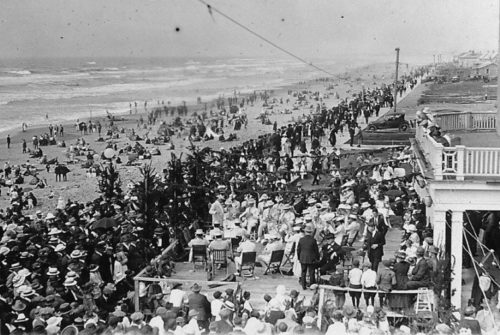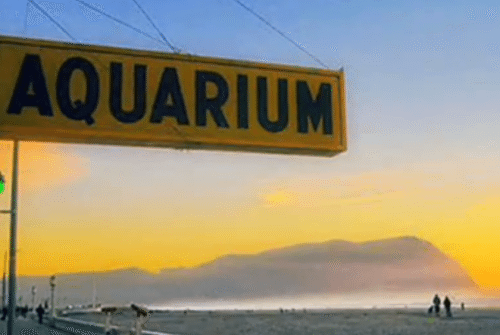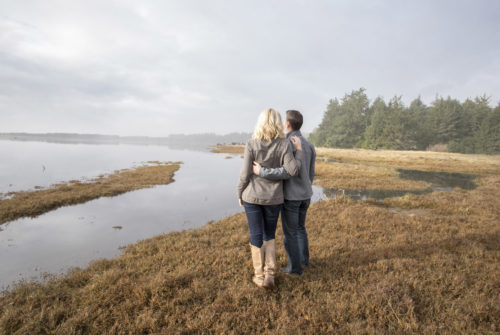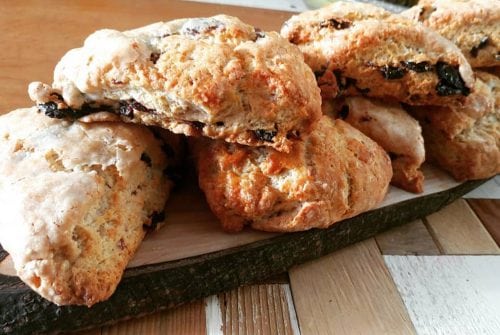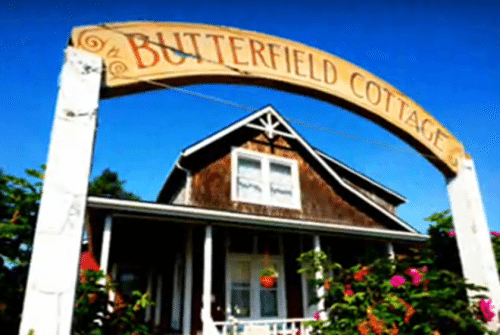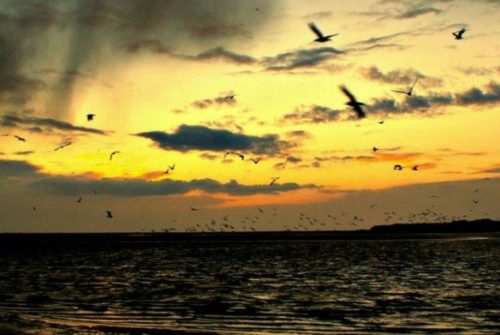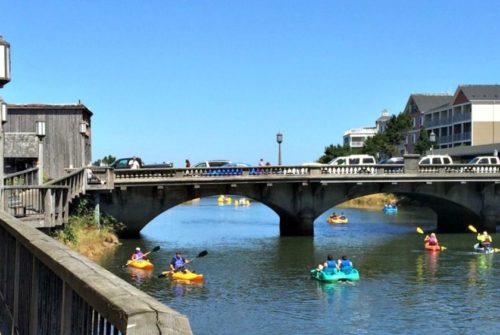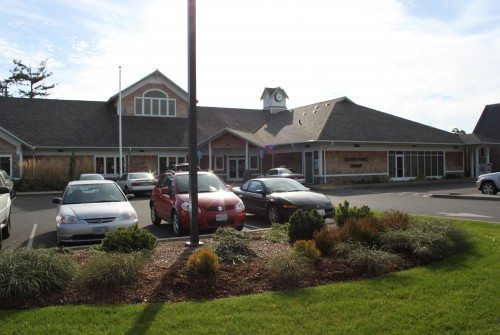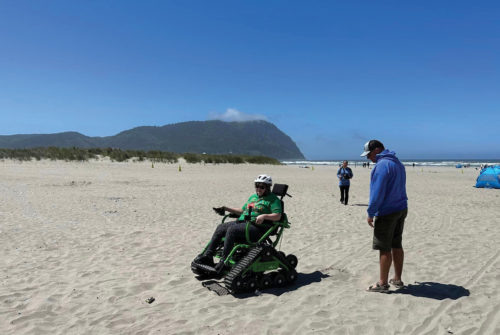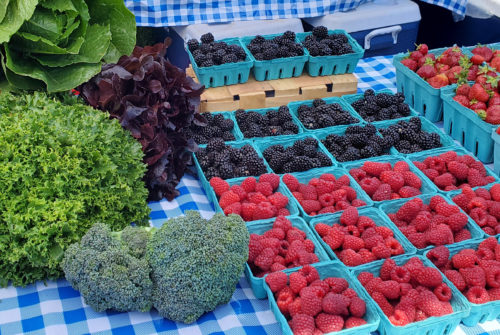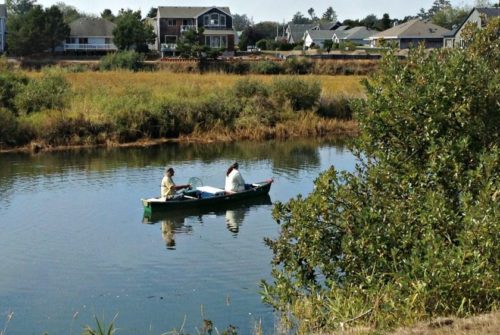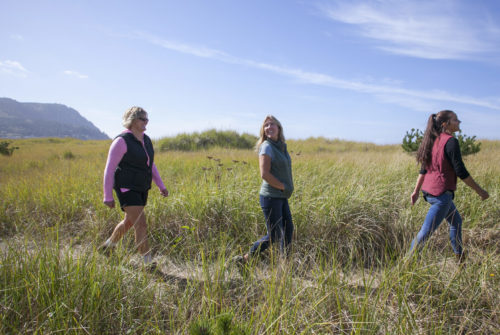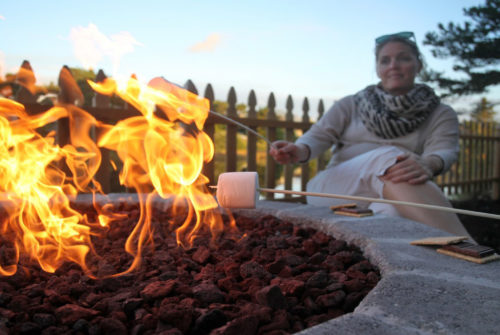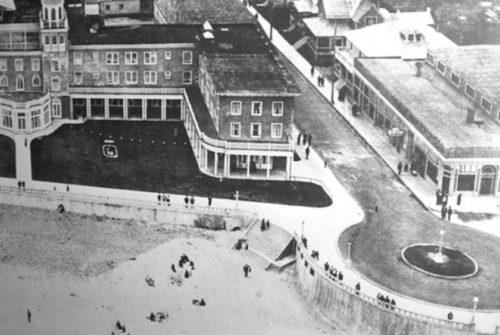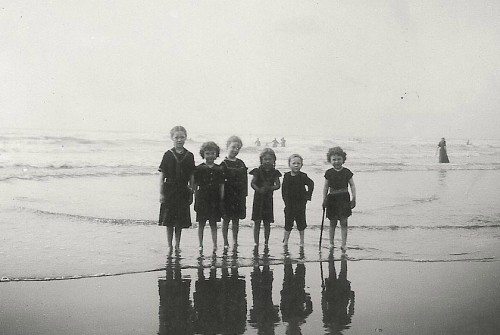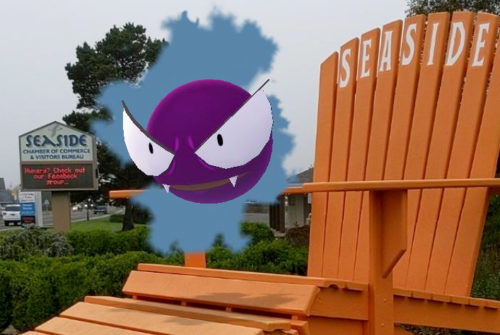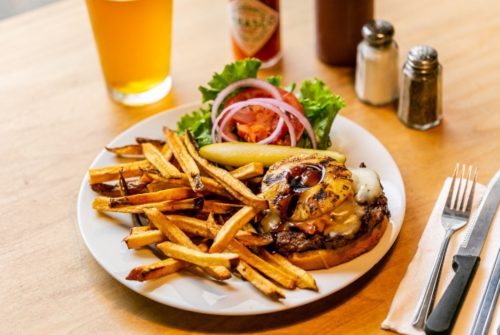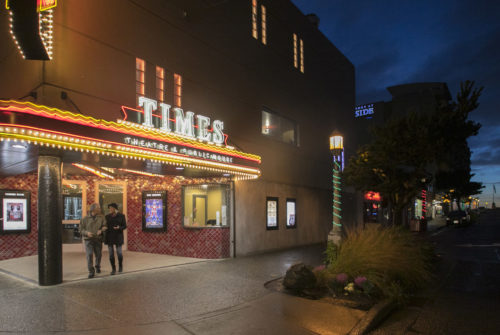With one of the longest, sandiest, and most spacious beaches on the Oregon Coast, Seaside is the perfect spot to go looking for treasures from the sea — everything from familiar plants, shells and sand dollars to other sorts of interesting flotsam and jetsam. With varied beach environments from an estuary to a cove, there’s plenty of space to explore. Here’s what you need to know before getting started.
Shells, Sand Dollars and More
According to Tiffany Boothe, assistant manager of the historic Seaside Aquarium, here are some of the most common items you might find while beachcombing in Seaside.
Seafoam — Deposited right at the water’s edge or farther up the beach, billowy clouds of seafoam are produced when dissolved organic matter like dead algae is churned up by waves. It’s not something you can collect or take home, but it’s a fun find, especially for kids who love to run through “bubbles.”
Shells — You’ll find shells aplenty in Seaside, including razor-clam shells, olive-snail shells and giant western nassa shells — which look like snail shells in a variety of patterns, perfect for decorating sandcastles.
Bull kelp — These rubbery ribbons of kelp are capable of growing up to 200 feet long. You’ll find long strands or gigantic clumps washed up throughout the year. And at the holdfast root, you can sometimes discover tiny communities of crabs, sea squirts, urchins and anemones.
Sand dollars — If sand dollars, the intricately patterned, delicate shells of burrowing sea urchins, are what you seek, Boothe recommends beachcombing about an hour before low tide, starting from 12th Avenue and heading north.
Razor clams — With an oval-shaped amber shell, razor clams are Pacific Northwest beach icons. Although they live below the sand, you can find where they are by looking for their “shows”: small circles or dimples in the sand.
Sea gooseberry — Don’t let the name fool you: These aren’t actual berries but jellies. These comb jellies wash up throughout the year, and during spring and fall, you can also encounter the vibrant-blue Velella velella jellies.
Dungeness crab shells — During molting season in late spring and early summer, you may find entire Dungeness crab shells on the sand. They tend to smell like crab, so it’s best not to take them home.
Tube worm casing — Found throughout the year in large clusters, these casings are the cast-offs of the cellophane worm. They can resemble plastic debris but are entirely organic.
Want to do some good while having a lot of fun? Help us keep the beach clean and your next coffee is on us.
Best Spots for Beachcombing
Seaside has many great spots for beachcombing along its lengthy beach stretching from Tillamook Head in the south to the Necanicum Estuary in the north. The Cove’s curved, rocky shore at the south end of town also manages to snag items like hermit crabs, red rock crabs, sea stars and sea anemones.
For razor clams, there’s nowhere better than Clatsop Spit, which includes Seasides beach and extends to where the Columbia River meets the Pacific; more clams are harvested here than all other Oregon beaches combined.
Beachcombing is all about keeping your eyes on the sand, but every so often, scan the sky and sea: You may see native wildlife like coastal birds, harbor seals, and migrating humpback whales during the fall and spring.
If You Go:
Seaside is among the safest beaches on the Oregon Coast thanks to the summertime lifeguards (on duty Memorial Day through Labor Day) but you still need to be aware of your surroundings. Always check the tide charts and weather reports, and avoid sneaker waves by never turning your back to the sea. Also, please be respectful of the plants and wildlife that call the beach home by not littering and leaving the area you beachcomb in cleaner than you found it. Consider taking part in Seaside’s ongoing Treasure the Beach cleanup on the first Saturday of each month.
Photo by Nickie Bournias
